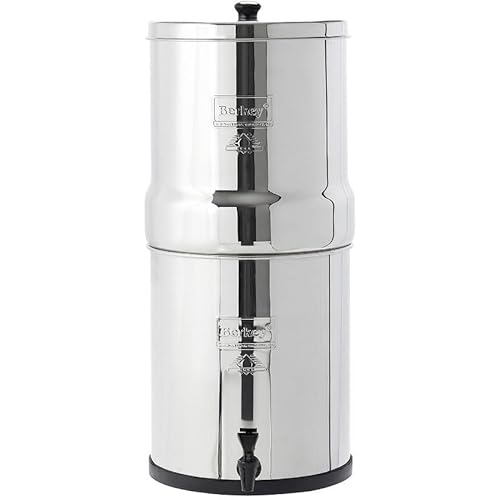APEC ROCT-Plus Countertop Reverse Osmosis System, Efficient RO Filter 3:1 Pure to Drain, Instant Hot Water ± 2° for Tea, UV Water Filtration







Buy Now, Pay Later
- – Up to 36-month term if approved
- – No impact on credit
- – Instant approval decision
- – Secure and straightforward checkout
Ready to go? Add this product to your cart and select a plan during checkout.
Payment plans are offered through our trusted finance partners Klarna, Affirm, Afterpay, Apple Pay, and PayTomorrow. No-credit-needed leasing options through Acima may also be available at checkout.
Learn more about financing & leasing here.
Selected Option
Eligible for Return, Refund or Replacement within 30 days of receipt
To qualify for a full refund, items must be returned in their original, unused condition. If an item is returned in a used, damaged, or materially different state, you may be granted a partial refund.
To initiate a return, please visit our Returns Center.
View our full returns policy here.
Recently Viewed
Style: Countertop RO
Features
- COUNTERTOP RO SYSTEM: No need for installation or plumbing. Carefully designed to deliver purified water and a visually appealing aesthetic to your home, this system offers unmatched convenience. Simply fill the reservoir, plug it into a nearby outlet, and indulge in refreshing purified water with a simple button press. Whether you're a renter, need an RV water filter, require a solution for a small office, desire a home gym accessory, or seek portability in any scenario, this reverse osmosis system is the perfect fit
- ADVANCED RO/UV WATER PURIFICATION: Experience exceptional water filtration through cutting-edge 3-in-1 reverse osmosis combined with UV Light technology. The filtration process consists of three stages: 1st Stage, a PP cotton sediment filter efficiently captures large particulates. 2nd Stage employs an RO membrane to effectively eliminate a wide range of impurities, including Chromium, PFAs, fluoride, salt, heavy metals, nitrates, arsenic, chlorine, chloride, and much more. 3rd Stage uses a post-carbon layer to enhance taste and polish. Finally, the water undergoes a rigorous treatment under high-powered ultraviolet light, ensuring nothing remains except refreshing, purified water
- EFFICIENT 3:1 PURE TO DRAIN: Leveraging innovative water recirculation technology, the ROCT-PLUS achieves an impressive 3:1 pure to drain ratio during the osmosis process - 4 cups of tap water produce 3 cups of purified water and 1 cup of wastewater. The APEC ROCT-PLUS countertop reverse osmosis system stands out for its economic efficiency due to less water wasted
- Instant Heating Technology: Elevate your tea experience using purified water for an unparalleled taste with precision heating element within 2.Rreach temperatures of up to 203F with ease, you have the flexibility to effortlessly tailor the settings to your desired preference - preparing baby formula, brewing coffee or drinking room temperature water directly. The ROCT-PLUS uses an instant heating technology, avoiding re-boiling and ensuring your every sip is pure and fresh
- RO SYSTEM DIGITAL DISPLAY: The front-facing digital interface provides a comprehensive overview of key system aspects. It visually indicates the status of the UV light activation, displays the current water temperature, and offers a clear indicator for the RO filter life and water quality. A critical safety feature, the system is also equipped with a CHILD LOCK to ensure protection against potential accidents
Description
The APEC ROCT-PLUS is designed to provide impeccably pure water and aesthetically pleasing design in the home. Dispenses water as hot as 203 degrees or adjusts to your preference with highly accurate precision between ± 2°. Featuring a 3-in-1 reverse osmosis cartridge and high-powered UV light for optimal water purification. 1st STAGE: PP cotton sediment filter for large particulates. 2nd STAGE: RO membrane effectively removes Chromium, PFAs, fluoride, salt, heavy metals, nitrates, arsenic, chlorine, chloride, and other harmful impurities. 3rd STAGE: Post-carbon layer polishes/improves taste. Lastly, water passes through high powered ultra-violet light ensuring nothing remains except purified water. The digital display provides indication of water quality (TDS), filter replacement reminder, whether UV light is on, and child lock option to prevent injury. Experience bottled water quality without the cost and environmental impact, and with all the more convenience of pure refreshing water on-demand within your home.
Color: White
Material: Polypropylene (PP)
Capacity: 1056 Gallons
Brand: APEC WATER
Product Dimensions: 7.87"D x 15.37"W x 15.59"H
Product Dimensions : 7.87 x 15.37 x 15.59 inches; 14 Pounds
Item model number : ROCT-PLUS
Date First Available : October 21, 2023
Manufacturer : APEC Water Systems
Country of Origin : China
Best Sellers Rank: #27,891 in Tools & Home Improvement (See Top 100 in Tools & Home Improvement) #93 in Under-Sink & Countertop Filtration
#93 in Under-Sink & Countertop Filtration:
Customer Reviews: 4.3 4.3 out of 5 stars 594 ratings
Frequently asked questions
To initiate a return, please visit our Returns Center.
View our full returns policy here.
- Klarna Financing
- Affirm Pay in 4
- Affirm Financing
- Afterpay Financing
- PayTomorrow Financing
- Financing through Apple Pay
Learn more about financing & leasing here.
Similar Products
Top Amazon Reviews
























